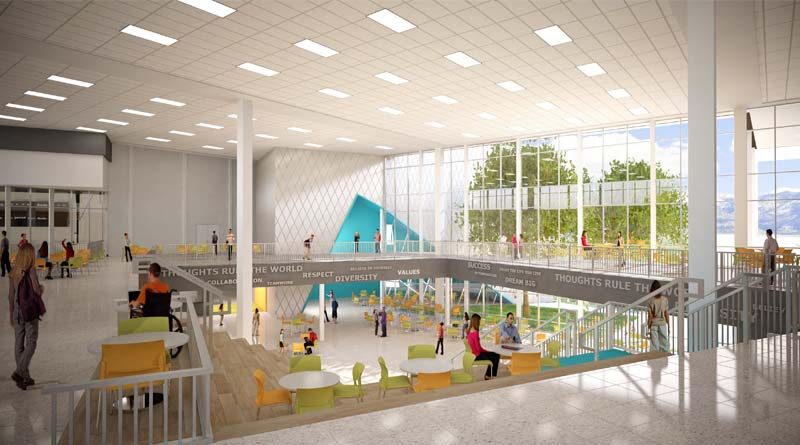New Montana High School Targets November Completion
By SCN Staff
BOZEMAN, Mont.—Construction continues on the new $93 million high school in Bozeman, with a completion date slated for this November.
When developing concepts for the new 1,500-student Gallatin High School, the design team of Cushing Terrell gravitated toward a layout inspired by a town center. Working with general contractor Langlas and Associates, “the town center concept represents a place where people come together for a variety of purposes—a focal point for meetings, commerce, social interaction, and other public events — all aligned with building a unified, interactive community,” said Corey Johnson, education design studio director, Cushing Terrell.
Much like in a city or town, Cushing Terrell envisioned the school’s town center as a dynamic, shared space. It represents the convergence of learning “streets,” the primary social arteries linking the school together, which are widened to offer collaborative breakout spaces. The town center will also be surrounded by important community functions such as the administration offices (town hall), library, art gallery, student store, gymnasium, auditorium, and food court.
“A north/south alignment of the campus architecture facilitates the flow of movement to and from outside environments, such as landscaped areas and sports fields, through the entry plazas, all connecting via the town center,” explained Johnson.
With the town center serving as a hub, one learning street is oriented to the north, terminating in a wall of glass facing Sacagawea Peak in the Bridger Range. Another learning street leads to academic community areas that look out at the Tobacco Root Mountains to the west. The glass wall of the town center also connects viewers with the Spanish Peaks to the southwest, as do windows in other academic communities situated at the south of the facility.
The town center will also serve as an amphitheater for assemblies and speakers, as well as provide space for small group meetings and individual study areas. Incorporating a highly functional staircase, spaces for a coffee bar and café will be tucked under the stairs. Extra-wide hallways will allow for greater visibility into other learning areas.
Rather than spreading the 304,000-square-foot school across two levels, a more compact three-story solution will be implemented to shorten distances from one side of the school to the other and provide greater efficiency in the building’s footprint, systems and energy use.

